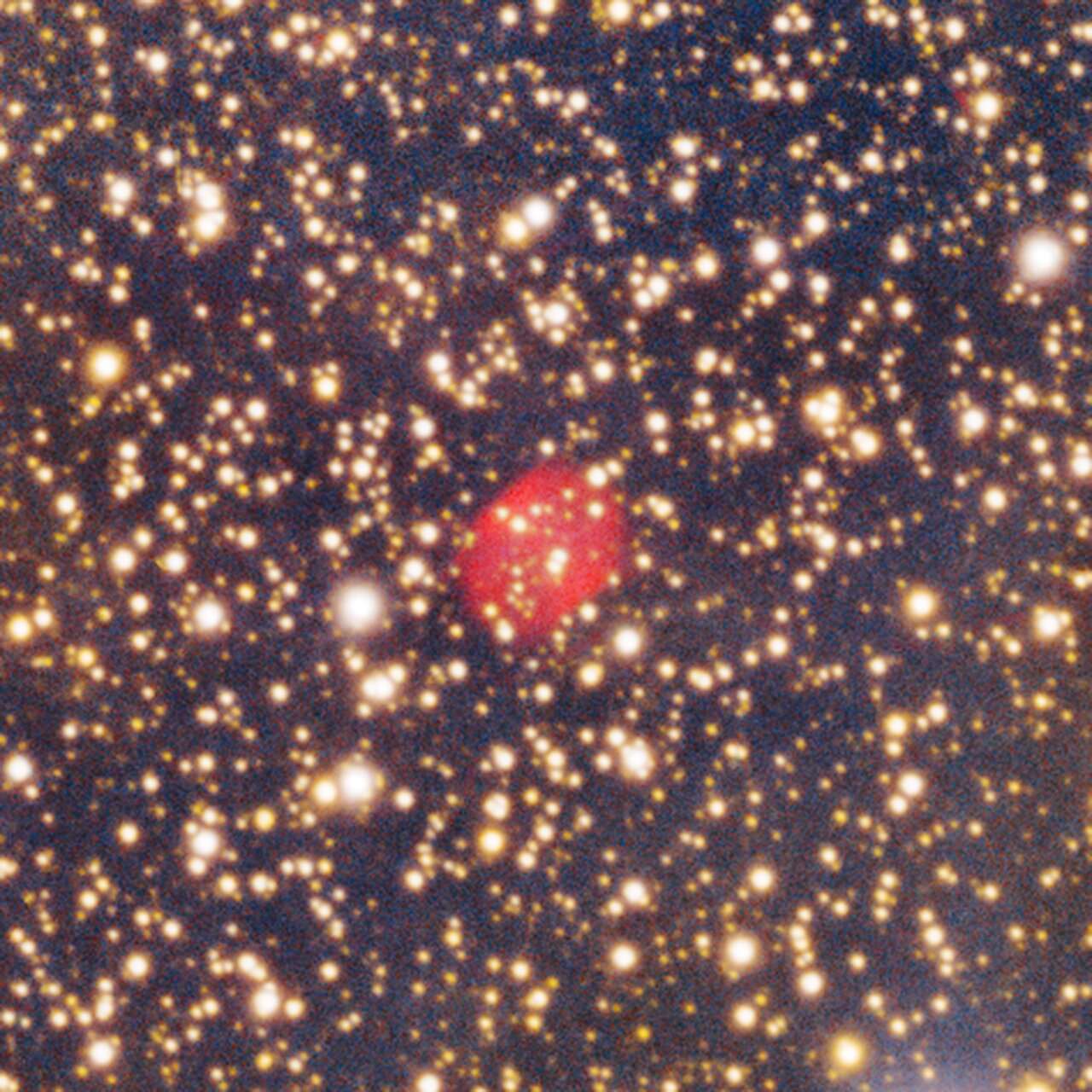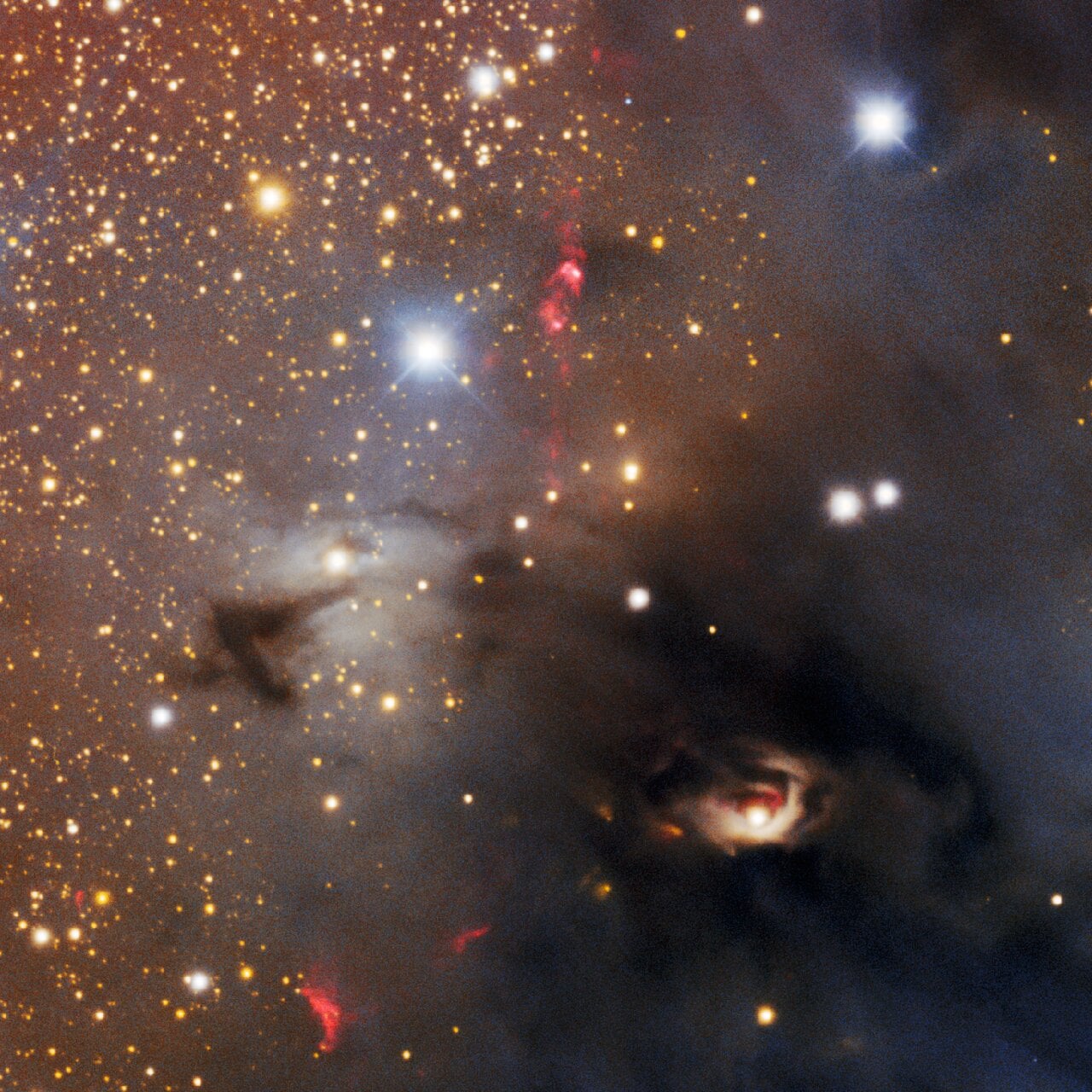Star birth is a process hidden inside dense crèches of gas and dust. Yet, if you know what to look for, you can see the products of this essential cosmic process across the sky. The Circinus West molecular cloud is a starbirth region some 2,500 light-years away. It boasts everything from dark nebulae to protostellar objects and newborn stars to the faint ghosts of stars that have already died.
 *A planetary nebula found in the Circinus West molecular cloud is the ghostly leftover of the death of a star similar to the Sun. Credit: CTIO/NOIRLab/DOE/NSF/AURA*
*A planetary nebula found in the Circinus West molecular cloud is the ghostly leftover of the death of a star similar to the Sun. Credit: CTIO/NOIRLab/DOE/NSF/AURA*
Recently, the world's most powerful astronomical camera took a deep look at the western end of this starbirth region in the southern hemisphere skies. The 570-megapixel Dark Energy Camera, mounted on the Victor M. Blanco 4-meter Telescope at Cerro Tololo Inter-American Observatory in Chile, captured high-resolution views of a spidery-looking dark nebula that lies against a backdrop of stars. This shadowy cloud harbors protostars forming inside its cold depths. Those young stellar objects will eventually "eat their way" out of the cloud.
Pockets of light from newborn stars burst out from around the spidery cloud in Circinus West. Those stars also send jets of material that erode giant caverns in the dark molecular cloud. There's one region, called the Cir-MMS area, where intense radiation from a newborn star is carving out a cavity around it. The Herbig-Haro objects in this region are plentiful and tell astronomers that there's a lot of star formation going on there.
 *Two Herbig-Haro objects in the Circinus West molecular cloud, HH 76 and HH 77. These glowing red streams and patches formed as fast-moving gas from newborn stars blast into the surrounding cloud of gas and dust. CTIO/NOIRLab/DOE/NSF/AURA*
*Two Herbig-Haro objects in the Circinus West molecular cloud, HH 76 and HH 77. These glowing red streams and patches formed as fast-moving gas from newborn stars blast into the surrounding cloud of gas and dust. CTIO/NOIRLab/DOE/NSF/AURA*
A Starbirth Primer
The general process of star birth is pretty well understood. A cold molecular cloud, like the one in Circinus West, begins to coalesce under the force of gravity. Nearby activity (such as a supernova explosion or a passing star) may give the cloud a "nudge". In the densest part of the cloud, temperatures and pressures begin to build as more material accretes.
Eventually, conditions are ripe enough that a protostar "turns on" and begins to emit its own light and radiation. As it continues to form, it "grows" jets that stream out across space. Those jets and the intense ultraviolet radiation from the forming star are what scour out huge caverns. That process is called photo-evaporation, and it's a pretty good descriptor of what's happening. Essentially, the UV light "evaporates" the molecules in the birth cloud. At some point, the temperatures and pressures are high inside the protostar where nuclear fusion occurs. At that point, a star is born.
How DEC Is Helping Understand Star Birth
That's the "executive summary" of star birth. However, as with most processes in the Universe, the details matter. Astronomers study regions such as Circinus West, the Orion Nebula, and other star birth creches to gather more in-depth information about the process of star formation.
The Dark Energy Camera gives astronomers a very wide field of view at very high resolution. This lets them look more closely at objects in finer detail. For example, there's a planetary nebula in the Circinus West view. That's what's left over after a star like the Sun begins to die. It blows off its outer atmosphere, and the core layers shrink down to become a white dwarf. Finding a planetary nebula in this starbirth region tells astronomers something about the origin and evolution of its stars.
DEC's view also provides a closer look at those distant Herbig-Haro object jets streaming away from newly forming stars. Using DEC to study this region offers a good look at how newborn stars affect their environments. In addition, the wide-field view of the Circinus West dark nebulae gives more information about how molecular clouds behave and what stellar contributions they make to their galaxies.
Implications for the Sun
Closer to home, astronomers can apply what they see in other star-forming regions to understand how it worked when our own Sun and planets formed. That process began some 4.5 billion years ago when a molecular cloud similar to the one in Circinus West began to collapse in on itself. The Sun formed as that cloud coalesced, and it wasn't the only star to form in the cloud.
By some estimates, the birth of the Sun - from the first coalescence in the cloud to the beginning of nuclear fusion - could have taken about 50 million years. If it followed the general process, the infant Sun likely went through a Herbig-Haro phase before settling down. It would be interesting to know how long it lasted. The planets formed from the "leftovers" of the star formation process.
Since that general process appears to be active in Circinus West, astronomers can now compare what they see in that image to images of other star birth regions in the Galaxy. Star birth regions are evident in most galaxies, so understanding how the process works in the Milky Way gives a lot of insight into how it works across the Universe.
For More Information
Circinus West: A Dark Nebula Horboring a Nest of Newly Formed Stars
 Universe Today
Universe Today
